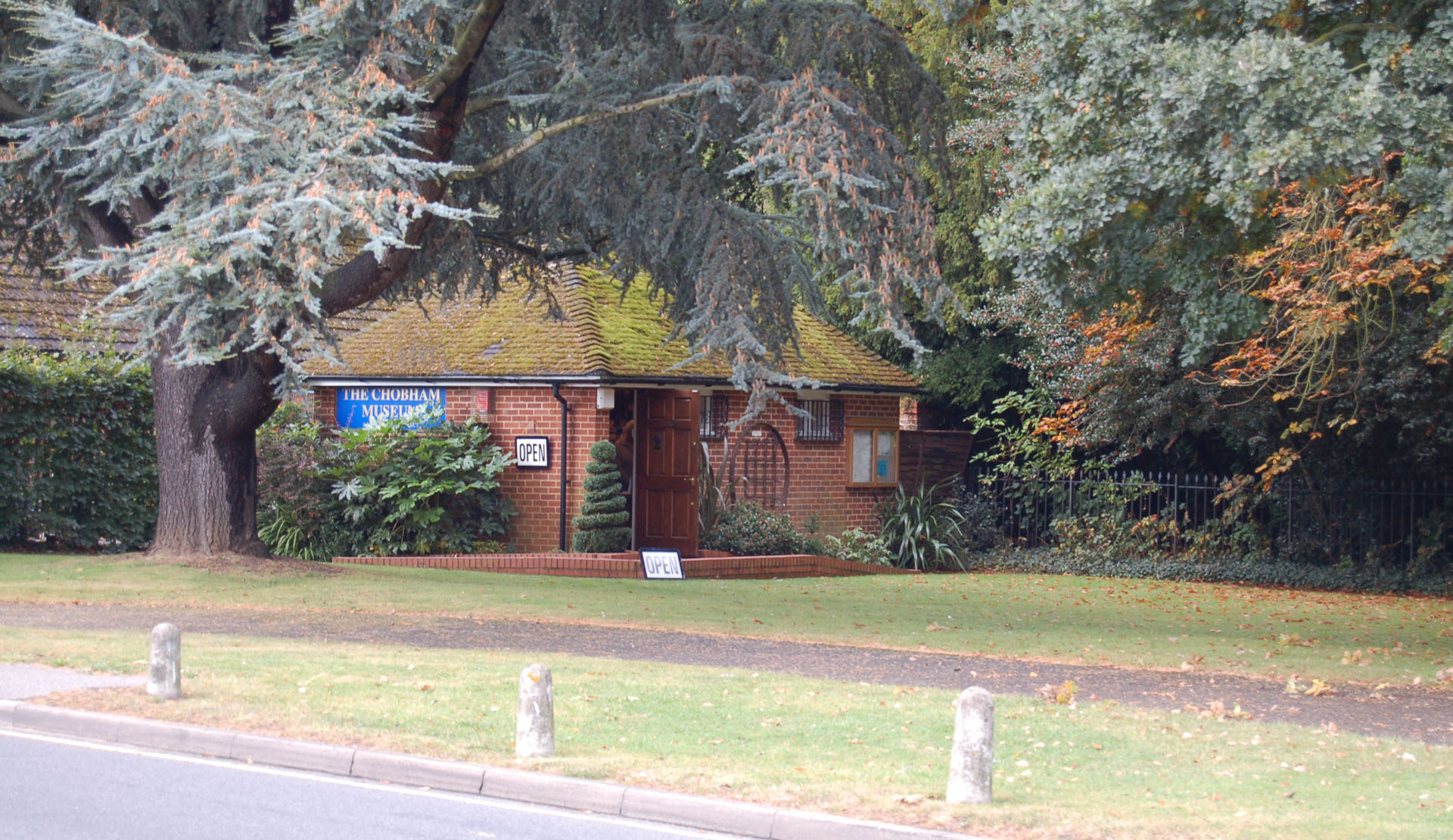Chobham is a medium-size village, with a population of about 5000, located in the N.W. corner of Surrey in south-east England. Surrounded by heathland, the village has always been an isolated community. When the railways were developed in the last century, the main lines went north and south of the village, passing through the nearby then smaller villages of Sunningdale and Woking. Thus Chobham has remained largely undeveloped whilst Woking has grown into the large town it is today.
The history of Chobham stretches back to before Domesday, being first recorded in the 7th century, during Saxon times. It has been a relatively prosperous village, especially for its yeoman farmers. During the period of great redevelopment which swept S.E. England in the 16th century, many fine farmhouses were built in Chobham, a large number of which survive today. Consequently, a wealth of beautiful old houses and cottages may be seen whichever road or lane is explored.
Two small rivers flow through the village – the Mill Bourne and the Bourne – towards their confluence about a mile to the east and are flanked by pleasant wide water meadows. Innumerable footpaths, bridleways and curiously named lanes meander through the surrounding countryside. The nearby Chobham and Horsell Commons provide ‘air and exercise’ for both Chobhammers and visitors alike. The wide open heaths have been particularly favoured by horse riders and Chobham has become a well known equestrian centre.
Chobham lies within the Metropolitan Green Belt and the village centre has been designated a conservation area. Great efforts have been made to resist ‘modern’ over-development and urban sprawl. Nevertheless, Chobham is under greater pressure than at any time in the past. This corner of Surrey is one of the fastest developing areas in Britain; the construction of the M3 and M25 motorways, the expansion of terminals at Heathrow – all combine to increase the demand for land for industry and housing as well as greatly increasing the traffic that the village is required to bear. Only with continued vigilance on the part of public-spirited Chobhammers will it be possible to retain its unspoilt character for the benefit and pleasure of future generations.
